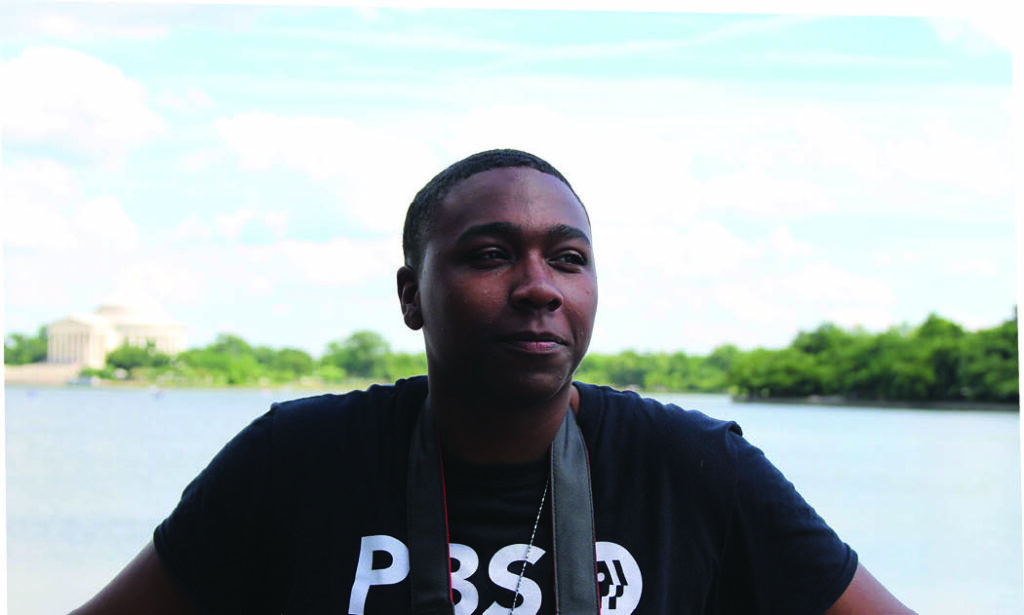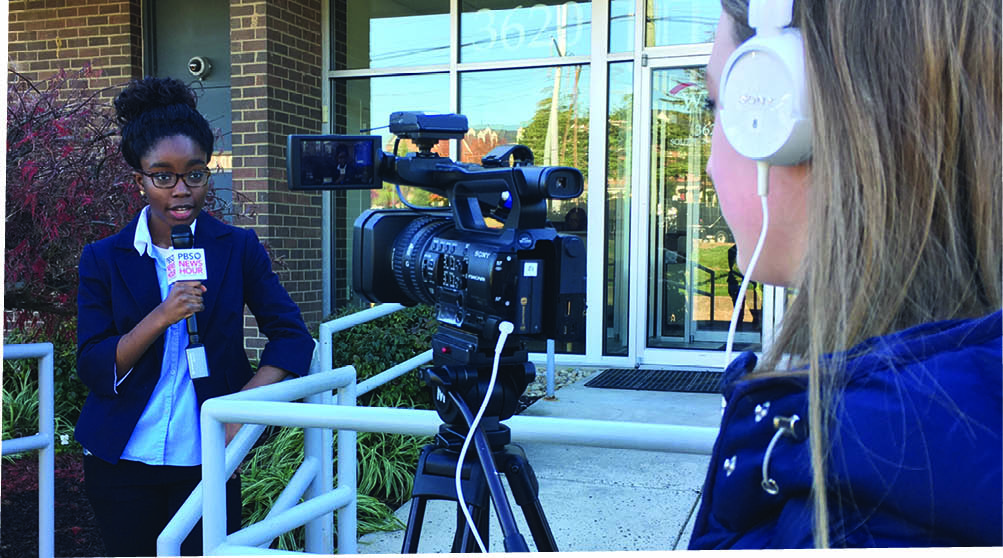Advocacy Agenda: April 2023

Now is the right time to start or grow your school’s student journalism program. America is deeply divided, your students are facing climate changes that directly affect their future, and adolescents are facing a mental health crisis exacerbated by the COVID-19 pandemic. We’re all struggling to figure out how to bring energy, purpose, and community buy-in back to schools.
PBS NewsHour Student Reporting Labs (studentreportinglabs.org) (SRL) delivers project-based student journalism that translates into critical communication skills, jobs, and life-changing experiences. Students develop stories that are meaningful to them, work with professional producers, and get published to authentic audiences via local and national media outlets.
“It can be difficult to create meaningful and safe experiences for our students to navigate how to share their opinions,” says Roy Umana, former principal of Northview High School in Covina, CA. “PBS NewsHour Student Reporting Labs has been so positive for our students because they are able to provide the environment and platform for students to truly express themselves.”
Producing media in the wake of school shootings, natural disasters, and social unrest is especially important to help students process what’s going on in the world and offers a proactive way to respond with agency and compassion. For instance, students producing stories for the “On Our Minds” podcast are reporting on grief and the social isolation of the pandemic, how to choose a path after high school, the power of a mental health diagnosis, and eating disorder recovery stories. Middle schoolers in the program even interviewed LeBron James about how to manage stress (with sleep and laughter).
Helping Students Tell Their Stories
I started SRL back in 2009. At the time, I was managing editor of the PBS NewsHour website, traveling the country talking to teachers and students to figure out what would help teens care about the news and use it to make informed decisions about their lives, their futures, and their communities.
Repeatedly I heard, “We don’t see people who look like us, and we don’t see or hear young people in the news.” My team and I took those words to heart. We started SRL with six pilot sites to see what it would take for students to change who gets to tell the stories about their communities and their experiences. We worked with amazing educators who ran high school broadcasting programs to create a curriculum and teacher training program so that any school that wanted a video journalism program could create it. Since then, more than 30,000 students have worked with SRL over the years, and today more than 3,000 educators are registered with the program. SRL operates in every state and even across the globe with sites in Japan, Brazil, France, the UK, Jordan, and Dubai.
Such exponential growth is important not just for schools but for communities and local news ecosystems. “The stories, segments, and videos produced by our students were not only showcased inside of our school but in our elementary classrooms and community as well,” says Nicole L. Malinoski, EdD, secondary director of teaching and learning for the Lebanon School District in Lebanon, PA. “This work allowed our school to fill the void of local news reporting, as many of the news outlets in our area were bought out due to corporate mergers. Due to the talent and dedication of both students and staff, numerous segments won local, state, and national awards. This type of honor sets the stage for future generations of journalists to strive for excellence to continue learning, refining, and sharpening their skills, knowledge, and talent.”
Students who have participated in SRL programs have gone on to become interns at local stations and are now journalists you can see on air in Wichita, KS; Louisville, KY; and Cincinnati, OH; and on national networks such as ESPN, with many more behind the scenes making movies, working in marketing, and starting their own media businesses.
“As a freshman in high school just being exposed to the world of broadcast, the mentors really changed me because they saw potential—they believed in me. A seed that was planted in me when I was merely 14 years old helped secure a position in the field nearly nine years later at 22,” writes Keenan Penn II, who just started a job as a producer at station KAKE in Wichita. “Not only that, but the experiences, memories, and relationships that I’ve gained through the program will last a lifetime.”
Penn’s stories about female welders in his high school’s CTE program and how teenagers cope with cancer diagnoses taught him how to honor other people’s stories and the power of bringing them into the world. Both stories are featured on his LinkedIn profile.
“Professional journalists worry about the rise in citizen journalism, but I think the access that my generation has to cameras and the internet allows us to tell stories like this. As young people, we see the world differently and offer a different angle. This diversity can lead to more exposure for the voiceless,” explains SRL reporter Kennedy Huff, whose story on a music education program at the Gardner-Betts Juvenile Justice Center in Austin, TX, ran on the PBS NewsHour and was picked up by Teen Vogue.
These young people are applying the skills they learned in SRL—video editing, lighting, and photography, yes–but also listening deeply, showing empathy, striving for accuracy in reporting, and respecting other people’s stories.
Bringing Student Voice to Your School

Teachers who participate in Student Reporting Labs are part of a strong media literacy community that centers on student voice. They provide instructional resources and support to navigate the challenges inherent in teaching controversial topics. “It’s absolutely the best thing I’ve done in my teaching career,” says Mitch Schwartz, a teacher at Dominion High School in Sterling, VA, whose students reported on foster care experiences, stereotypes in sports, and the effect of the pandemic on the nursing profession. His student journalists also interviewed the GOP and Democratic Senate candidates and participated on panels about student journalism and the future of public media.
Here’s how you can bring SRL to your school:
- Start with StoryMaker (story-maker.org)—our online platform has a “getting started” module with prompts.
- Share “On Our Minds,” a student-produced podcast (studentreportinglabs.org/on-our-minds) with school counselors, parents, and teachers.
- Sign up for our newsletter (studentreportinglabs.org/newsletter) for student stories that pique your students’ interest and relate to their community.
- Reach out to existing local broadcast, media studies, or journalism programs.
- Contact [email protected] to find an SRL near you and connect with your local PBS station to see how you can find financial support for local student journalism.
By working with SRL, educators “are equipping our students to be critical thinkers and apply their knowledge in real-world experiences,” says Umana. “Our students strive to share their truth, their voice, and ultimately their hearts with the world; they just need guidance on how to do it so they can be heard.”
This program—and the publicity and positive feedback that students have received from it—has ultimately allowed our students to see the value in project-based learning where they can showcase skills otherwise left untouched, Malinoski says. “These stories have not only touched the lives of those involved in the creation of the broadcast, but have allowed our community to see the talent, dedication, and excellence of our students.”
Let’s bring SRL to your school!
Leah Clapman is the executive director of PBS NewsHour Student Reporting Labs and Education.
